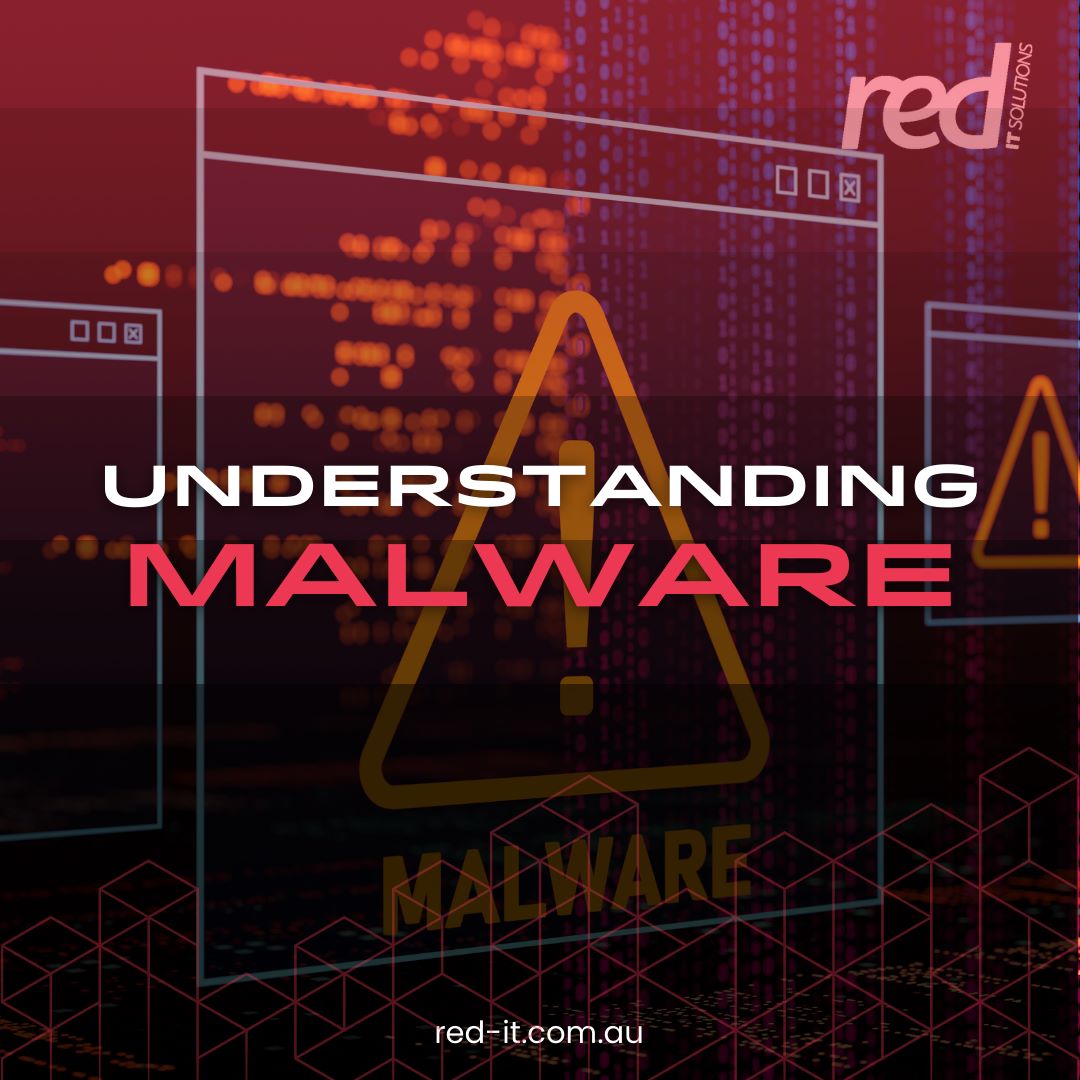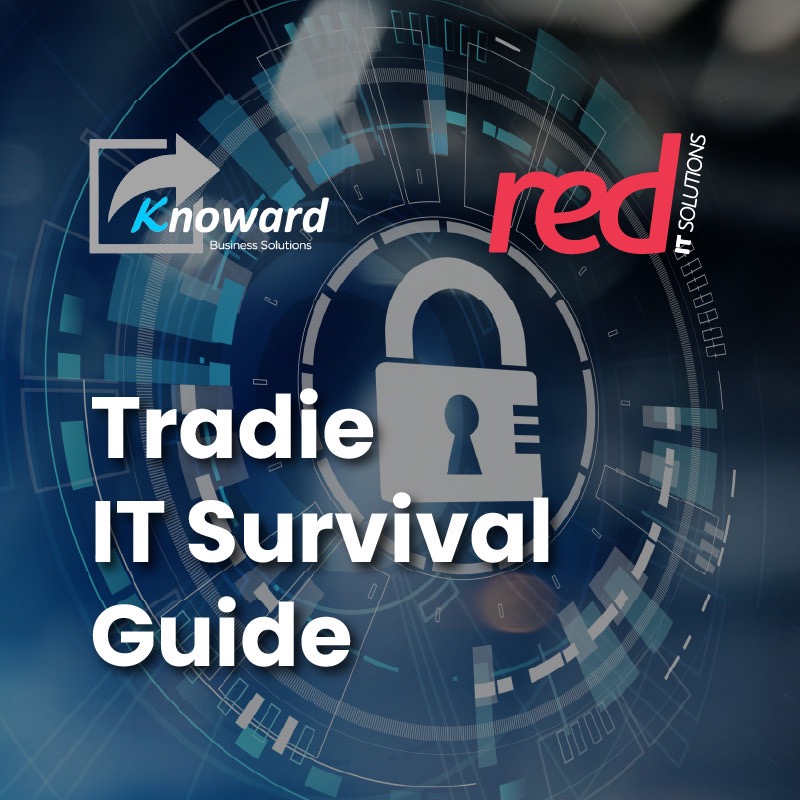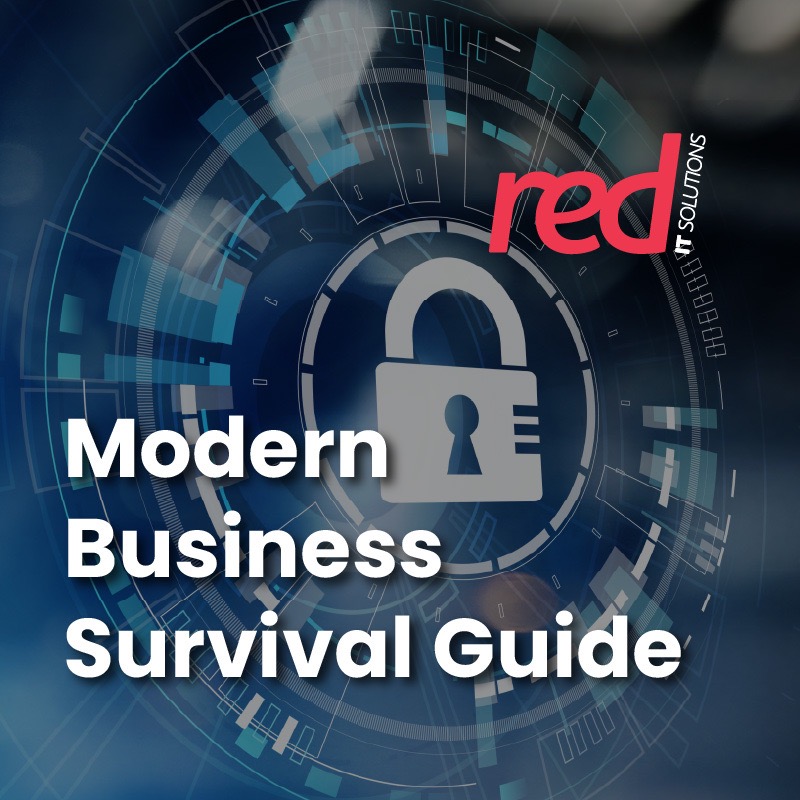
At Red IT, we are committed to elevating our clients’ understanding of cybersecurity threats, focusing on detailed descriptions of malware types such as ransomware, viruses, spyware, and trojans, and offering strategies for protection.
Various Forms of Malware
Ransomware
Ransomware is a particularly insidious type of malware that encrypts the victim’s files, making them inaccessible, and demands a ransom for the decryption key. It acts by exploiting vulnerabilities in software or tricking individuals into installing it through phishing emails or malicious downloads. Once activated, ransomware can lock entire systems or encrypt specific, valuable files. The demanded ransom often involves payment in cryptocurrency, complicating tracking and recovery efforts. Notorious examples include WannaCry and Petya, which have caused extensive financial and operational damage across various sectors globally.
Viruses
Viruses are a well-known form of malware that replicate themselves by modifying other computer programs and inserting their own code. Once this replication succeeds, the affected areas are then said to be “infected”. Viruses can destroy data, slow down system resources, and log keystrokes. They require a host program to run and typically spread through email attachments, internet downloads, and shared files.
Spyware
Spyware is designed to spy on the user’s actions and collect personal information without consent. It can capture everything from web browsing habits to login credentials and financial information, often leading to identity theft. Spyware operates covertly, without the knowledge or consent of the user, making it particularly dangerous.
Trojans
Trojans, named after the Trojan Horse of ancient Greek history, disguise themselves as legitimate software but perform malicious activities once inside the host’s system. Unlike viruses, trojans do not replicate themselves but can steal information, install additional malware, or allow remote access to the system.
Adware
Adware is a type of malware that displays unwanted advertisements on a user’s computer or device. These ads often pop up without user consent and can be intrusive, affecting user experience and potentially leading to more malicious sites or software.
Rootkits
Rootkits are designed to gain unauthorised root or administrative access to a victim’s computer or network. Once installed, they enable cybercriminals to remotely control the system, steal information, or execute files without the user’s knowledge. Rootkits are notoriously difficult to detect and remove because they can hide their existence from standard antivirus software.
Keyloggers
Also known as keystroke loggers, keyloggers record the keystrokes made on a device, capturing all typed information such as passwords, credit card numbers, and personal messages. This information can then be sent to an attacker, leading to identity theft and financial fraud.
Worms
Worms are similar to viruses in that they replicate themselves to spread, but they do not require human action (like clicking on a link) to proliferate. Worms can spread across networks by exploiting vulnerabilities, causing widespread damage by consuming bandwidth and overloading web servers.
Botnets
Botnets are networks of infected computers or devices (bots) controlled by a central system (botmaster) for malicious purposes, such as launching Distributed Denial of Service (DDoS) attacks, sending spam, or executing credential stuffing attacks. Devices can become part of a botnet without the owner’s knowledge.
Scareware
Scareware tricks users into believing their computer is infected with malware, prompting them to install fake antivirus software or pay for unnecessary software to “fix” the non-existent problem. This type of malware preys on fear and can lead to financial loss or the installation of actual malware.
Strategies for Combating Malware
To protect against the sophisticated nature of malware, including ransomware, a multi-layered cybersecurity approach is essential. Here are key strategies:
Educate and Train: Awareness and education on cyber threats and safe practices significantly reduce infection risks.
Comprehensive Security Software: Utilise robust antivirus and anti-malware with real-time protection, ensuring they are regularly updated.
Strong Access Controls: Implement strong passwords and multi-factor authentication (MFA). Limit user access based on roles.
Routine Backups: Maintain up-to-date backups of critical data to ensure business continuity in the event of a ransomware attack.
Software Updates: Keep all software updated to mitigate vulnerabilities that could be exploited by malware.
Professional Cybersecurity Support: Partner with cybersecurity experts like Red IT for customised security strategies and solutions.
Conclusion
Understanding the intricacies of malware and ransomware is crucial for effective protection against these digital threats. Red IT is dedicated to providing expert guidance and tools to safeguard digital assets, ensuring that clients are well-prepared to defend against and recover from malware attacks.




